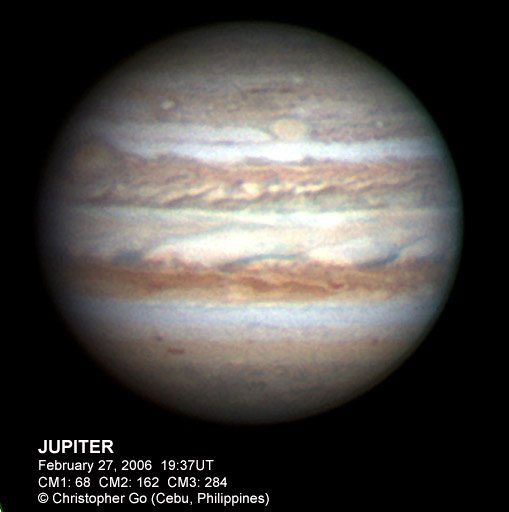Surprise! Jupiter Has A New Red Spot

Backyard astronomers, grabyour telescopes. Jupiter is growing a new red spot.
The official name of thenew storm is "Oval BA," but "Red Jr." might be better. It'sabout half the size of the famous Great Red Spot and almost exactly the samecolor.
Oval BA first appeared inthe year 2000 when three smaller spots collided and merged. Using Hubble andother telescopes, astronomers watched with great interest. A similar merger thathappened centuries ago may have created the original Great Red Spot, a stormtwice as wide as our planet and at least 300 years old.
Oval BA has been changingcolors in recent months. It was white in November 2005, slowly turned brown inDecember and then red a few weeks ago.
Why red?
Curiously, no one knowsprecisely why the Great Red Spot itself is red. A favorite idea is that thestorm dredges material from deep beneath Jupiter's cloudtops and lifts it tohigh altitudes where solar ultraviolet radiation--via some unknown chemicalreaction--produces the familiar brick color.
"The Great Red Spot isthe most powerful storm on Jupiter, indeed, in the whole solar system," saidGlenn Orton, an astronomer at JPL who specializes in studies of storms onJupiter and other giant planets.
Get the Space.com Newsletter
Breaking space news, the latest updates on rocket launches, skywatching events and more!
"The top of the storm rises8 km above surrounding clouds. It takes a powerful storm to lift material sohigh," Orton said.
Oval BA may havestrengthened enough to do the same. Like the Great Red Spot, Red Jr. may belifting material above the clouds where solar ultraviolet rays turn "chromophores"(color-changing compounds) red. If so, the deepening red is a sign that thestorm is intensifying.
"Some of Jupiter'swhite ovals have appeared slightly reddish before, for example in late 1999,but not often and not for long," says John Rogers, author of the book "Jupiter:The Giant Planet," which recounts telescopic observations of Jupiter overthe last 100 years.
"It will indeed beinteresting to see if Oval BA becomes permanently red," Rogers said.
Jupiter's Red Spot:Images of the Storm
Dark Spot on Jupiter Bigger than Famed Great Red Spot
Mystery Spot on Jupiter Baffles Astronomers
Join our Space Forums to keep talking space on the latest missions, night sky and more! And if you have a news tip, correction or comment, let us know at: community@space.com.
Tony Phillips is a professional astronomer and science writer who received a PhD from Cornell University in 1992. He is best known for his authorship of Spaceweather.com. In his career, he has worked as a radio astronomer at Caltech and published more than 100 articles in research journals such as Nature, the Astrophysical Journal, and the Journal of Geophysical Research. Among his astronomical interests are planetary and neutron star magnetospheres, radio storms on Jupiter and cosmic rays.









